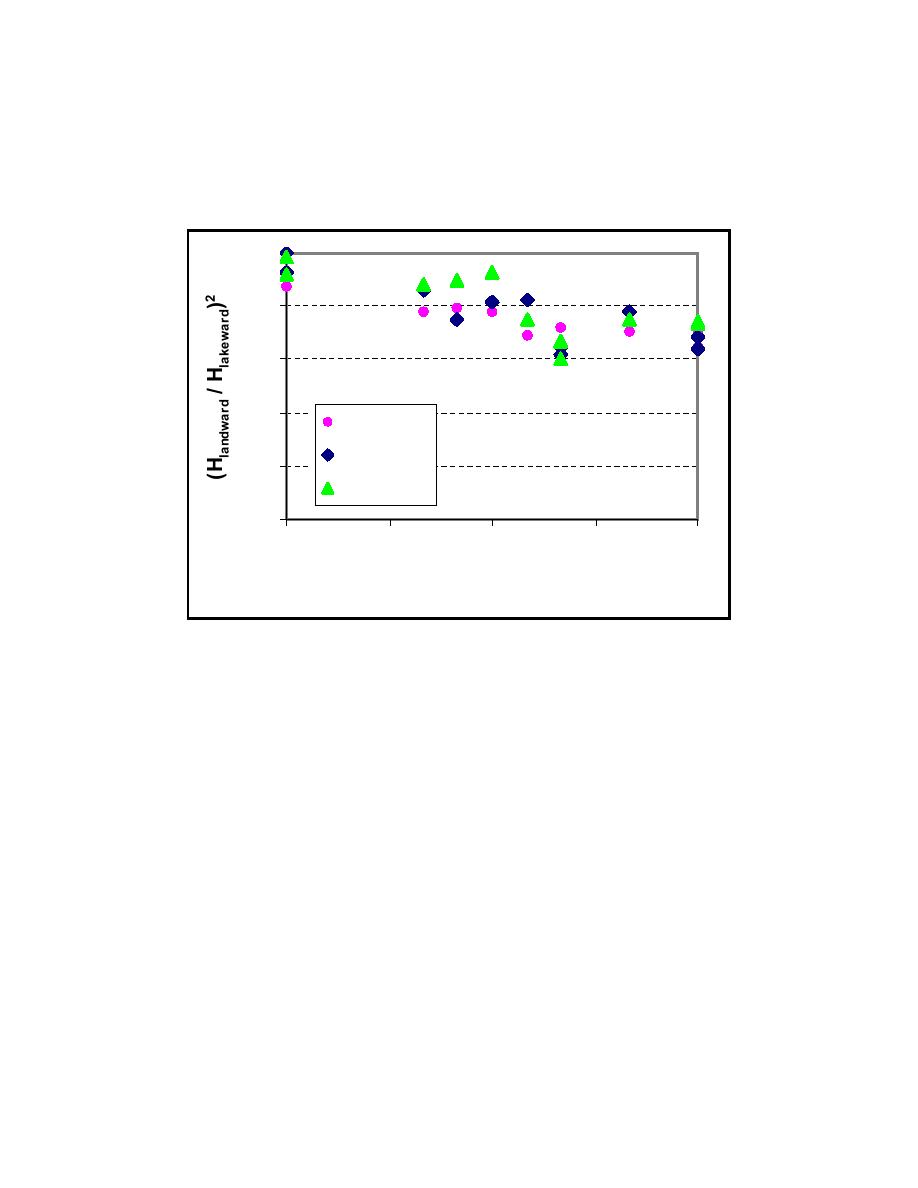
ERDC/CHL CHETN-III-69
March 2004
wavelength. Figure 3 shows the parameter (Hlandward/Hlakeward)2 versus pocket length, where Hlandward
is average wave height measured at a 3-gauge array on the landside of the pocket and Hlakeward is
average wave height measured at the array on the lakeside of the pocket. The square of the ratio
indicates the fraction of wave energy passing the pocket. Local wavelength for the wave periods
shown ranges from 33.2 to 38.1 m (109 to 125 ft).
1
0.8
0.6
0.4
T=5.36sec
T=5.7sec
0.2
T=6.1sec
0
0
50
100
150
200
Pock e t Le ngth (ft)
Figure 3.
Wave energy fraction passing single pocket for various pocket
lengths; wave direction aligned with channel; from physical model
(prototype dimensions)
From experiments in which direction of wave approach varied, it was determined that waves
approaching from straight down the channel represent overall worst-case scenarios in the channel (as
opposed to waves approaching from various angles). Figure 4 shows wave energy parameter
(Hlandward/Hlakeward)2 values for each configuration in Figure 2 for 0-, 15-, and 30-deg wave direction.
For every configuration tested, wave energy past the pocket decreases as incident wave obliquity
increases. As would be expected, pocket configuration can have a major impact on performance.
Figure 5 shows wave energy parameter averaged over the three periods and directions tested, which
is more representative of the overall effectiveness of the various configurations. Configurations C, E,
and F would be expected to perform better than A, B, and D, based on the general expectation that
wave dissipation correlates with total length of pocket, regardless of configuration details.
Configuration C, the double pocket similar to those constructed at Pentwater and White Lake
Harbors, Lake Michigan, appears to be most effective at reducing wave energy in the channel. For
configuration C, only about one-third of the energy remains after waves pass the pockets.
configuration F, identical to configuration C except that the pockets are offset along the channel
length rather than opposite each other, performs similarly to C for 0- and 15-deg wave directions.
4



 Previous Page
Previous Page
